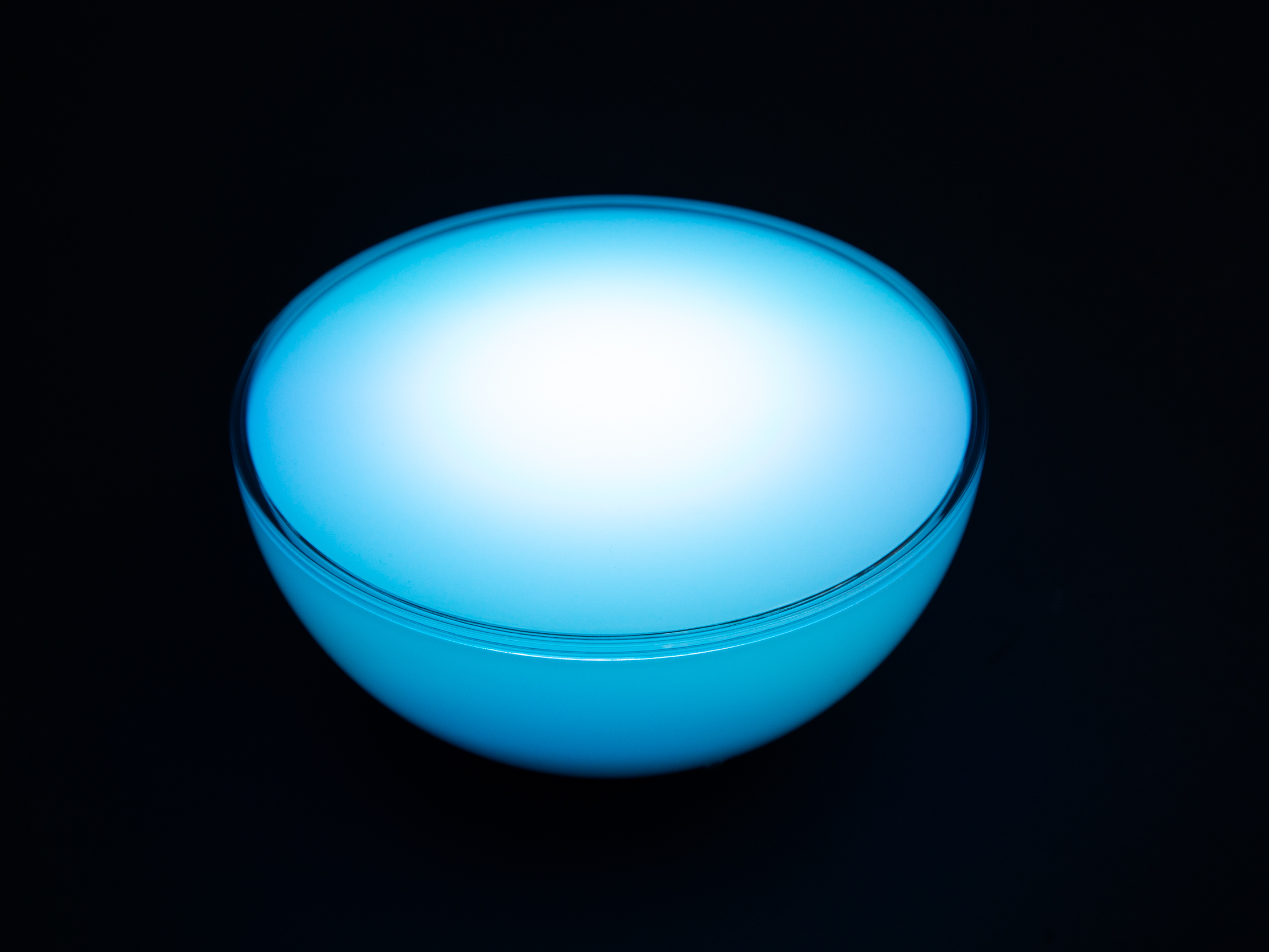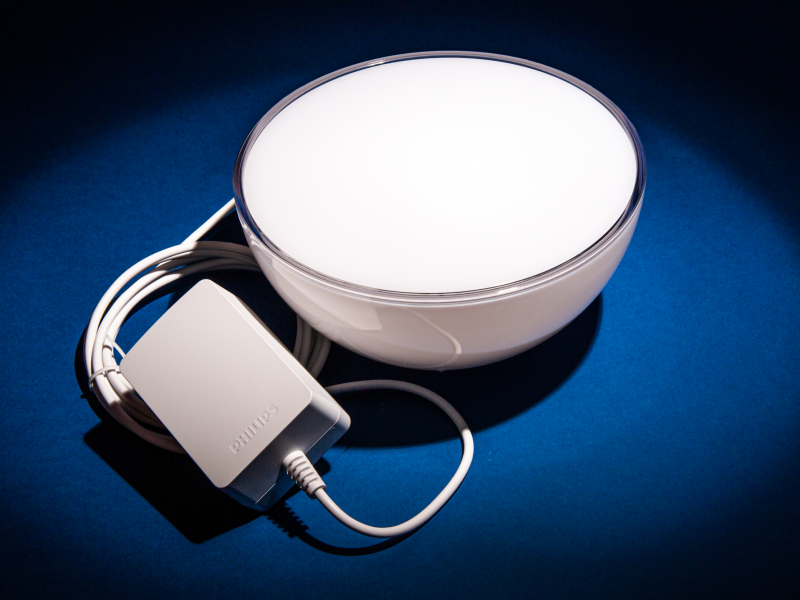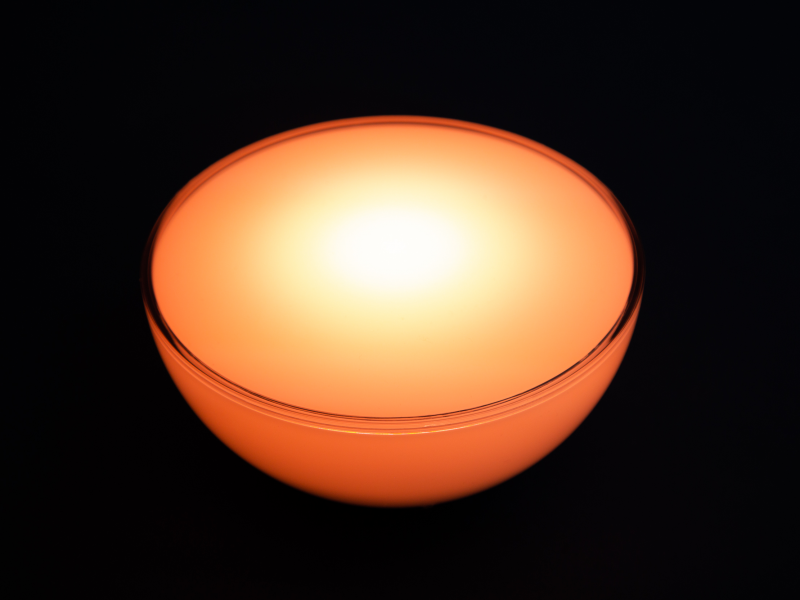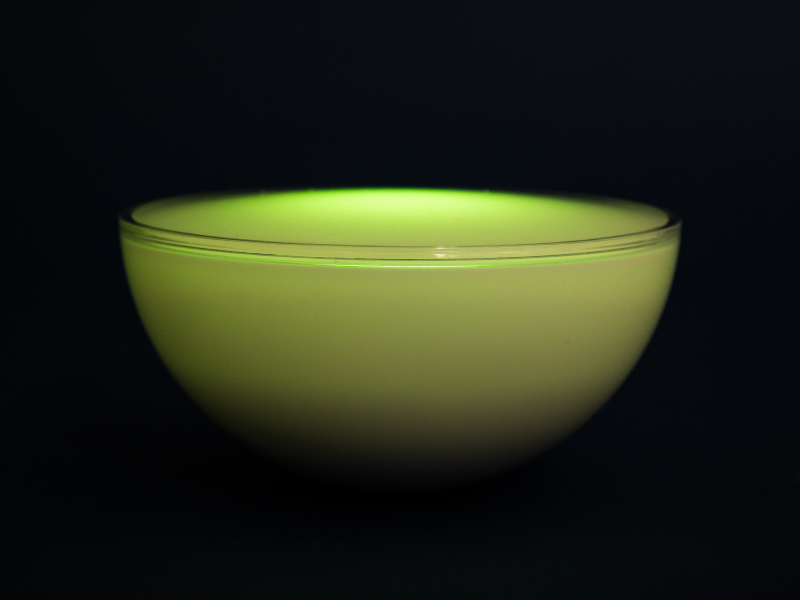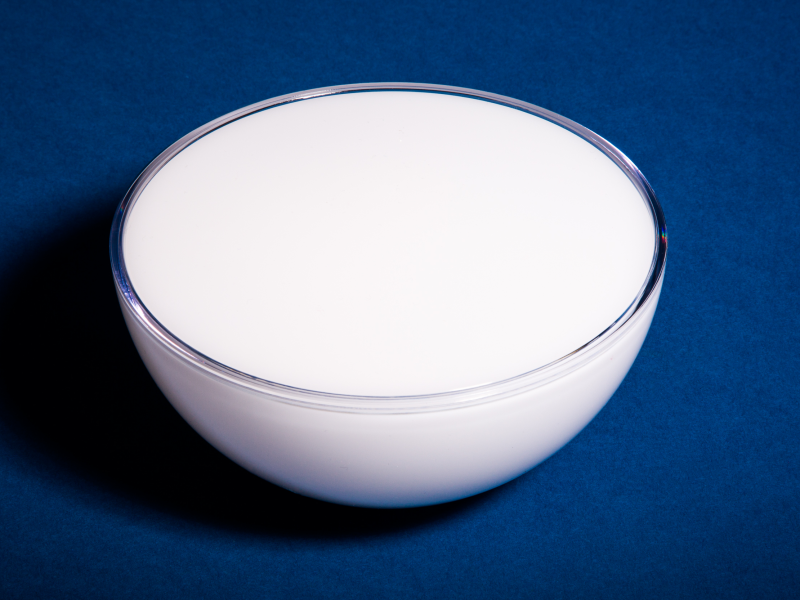- The Philips Hue Go is a portable Bluetooth-enabled smart lamp that changes color.
- You can control the Philips Hue Go in three ways: Wi-Fi, Bluetooth, or a button on device itself.
- I tested out the Philips Hue Go, and it’s a fun decorative light that doesn’t require a lot of setup. But, it’s not quite bright enough to replace a desk lamp.
As a smart home reporter, I recognize that Philips Hue’s smart lights are the best in the business. However, I personally don’t use them. My home is equipped with bulbs from Lifx, Koogeek, and TP-Link, and I wouldn’t have it any other way.
That’s because Philips Hue’s best bulbs from the past few years don’t connect directly to Wi-Fi. Instead, they connect to a separate device, called the Philips Hue Bridge, which links them to your router. That was an extra setup step I didn’t want to deal with, especially given the limited space and outlets in my 200-square-foot apartment.
Philips Hue’s parent brand, Signify, seems to have heard my prayers. Last summer, the company began to roll out a collection of Bluetooth-operated lights that remove Wi-Fi from the process altogether.
Design
This lineup includes a Bluetooth revamp of its Philips Hue Go, a bowl-shaped smart lamp that first launched in 2015. Rated for just 520 lumens, it's not bright enough to light up a full room, so it won't replace your desk lamp or ceiling fixture (most smart bulbs deliver between 800 and 1200).
But, it is an attractive decoration for a counter or coffee table, or portable light for camping or outdoor events, and adds a nice colorful glow to any scene. With Bluetooth compatibility, battery power, and one of the easiest setup processes I've ever experienced, it's a decent purchase for a minimalist, no-nonsense smart home owner.
Setup
The Philips Hue Go takes less than a minute to set up - if you're not using Wi-Fi.
For the Go to start working, just plug it in. If you're not tech savvy and don't want to hook the lamp up to any voice assistants, this is literally all you need to do.
At this point, you can control the Go with a physical button on the bottom. The button is easy to press. However, its location means you have to pick up the bowl to change the color. I wish it were somewhere more accessible, even if that would disrupt the product's design a bit. Even better would be button-less touch controls like those of Amazon's Echo Glow. Frankly, it feels a bit odd not to see touch controls on an $80 device.
Pressing the button cycles through a number of presets that include different colors and brightnesses, which are named in the device's instruction manual. A few of my favorites: a light pink called "Sunday Coffee," a pretty dark blue called "Meditation," and a very bright white called "Concentrate."
Double press and hold the button, and the Go will cycle through a range of colors. When you find one you like, you can let go, and that color will stay. It's quick and easy, but that's also all you can do - you can't hook it up to voice assistants or use it in conjunction with other smart devices.
The Hue Bluetooth app
Most people will want to use the Go with Bluetooth, which allows you to use it with Alexa and Google Assistant. To do this, you'll download the Hue Bluetooth app. This is different from the standard Philips Hue app, though I really wish the two could be combined for folks who want to use both Bluetooth and Wi-Fi lights. Hue BT took roughly five seconds to discover my Go.
Setting up Alexa is also a breeze. You can put the Go in pairing mode directly within the Hue BT app, then hop over to the Alexa app and tap "Discover Devices." Alexa takes 10 seconds to find the Go, and it is paired. Easy!
Once connected, you can tell Alexa and Google Assistant to turn the lamp on and off, change its color, and adjust its brightness. You can also access all of the automation features that both voice assistants offer. For example, you can add the Go to an Alexa routine, set it to a schedule, or tie its state to that of another connected device.
This is all that most people will need to do with the Go. As an Alexa user, I am able to control it with voice commands, and add it to my morning and evening routines.
I wish it could produce more effects, especially for a light that's mainly decorative. A strobe or a flicker effect, like some bulbs from Lifx and Sengled can produce, would look very cool on this device. However, the Go is responsive, and I like the ambience it adds to my room at night nonetheless. That's all I really need from a smart light. However...
Connectivity
There are only two reasons you'd need to hook the Go up the internet. The first is if you want to connect it to Apple HomeKit, which allows you to control it with Siri. The second is if you want to access some of the more advanced Philips Hue features, which are only available through the Philips Hue app (again, separate from the Hue Bluetooth app). For example, you can group it with other Philips Hue lights, allowing them to work together to create scenes (called "recipes"), automatically adjust based on your phone's location, and sync up with your music and movies.
This is pretty advanced smart home stuff, and if you want to access it with the Go, the setup process is a bit more complicated.
Philips Hue products don't connect to Wi-Fi directly; they connect to a middleman device (called the Philips Hue bridge) which sends them through to your router. This has some benefits. For example, it allows outdoor devices to operate outside the range of your Wi-Fi without a range extender, and it also allows you to keep using the lights if your internet cuts out. However, it also creates an extra setup step.
The Go doesn't come with a Hue Bridge, so you'll need to buy one separately for $59.99. Once you've got your Bridge, you'll plug it into power, turn it on, and hitch it up to your router with an Ethernet cable.
Hop into the Philips Hue app, and it should recognize your Bridge in a few seconds. Then, you can pair the Go with your bridge under Settings, Light Setup, and Add Lights. The process added about seven minutes to my setup process, but I've also set up dozens of these things before - first-timers should budget more time.
The bottom line
What I like the most about the Go is that you can get what you want out of it. If you want a unique colored light that requires minimal setup, you can operate it with the on-device control. If you want a light that works with Alexa, but don't need fancy automation features, Bluetooth mode is for you. And if you're a smart home power user who already owns Philips Hue products (or doesn't mind buying a bridge), you can use Wi-Fi for the full experience.
However, $79.99 is a lot, especially when you need to buy a $60 Bridge to access advanced features. If you don't want to spend that much, you might prefer Amazon's Echo Glow, which is much smaller and not as bright, but can produce many colors and cute effects.
Pros: Three different control options, simple setup, wide range of color options, light and portable
Cons: On the pricey side, Bridge required for advanced automation, limited special effects, not bright enough to function as a lamp
